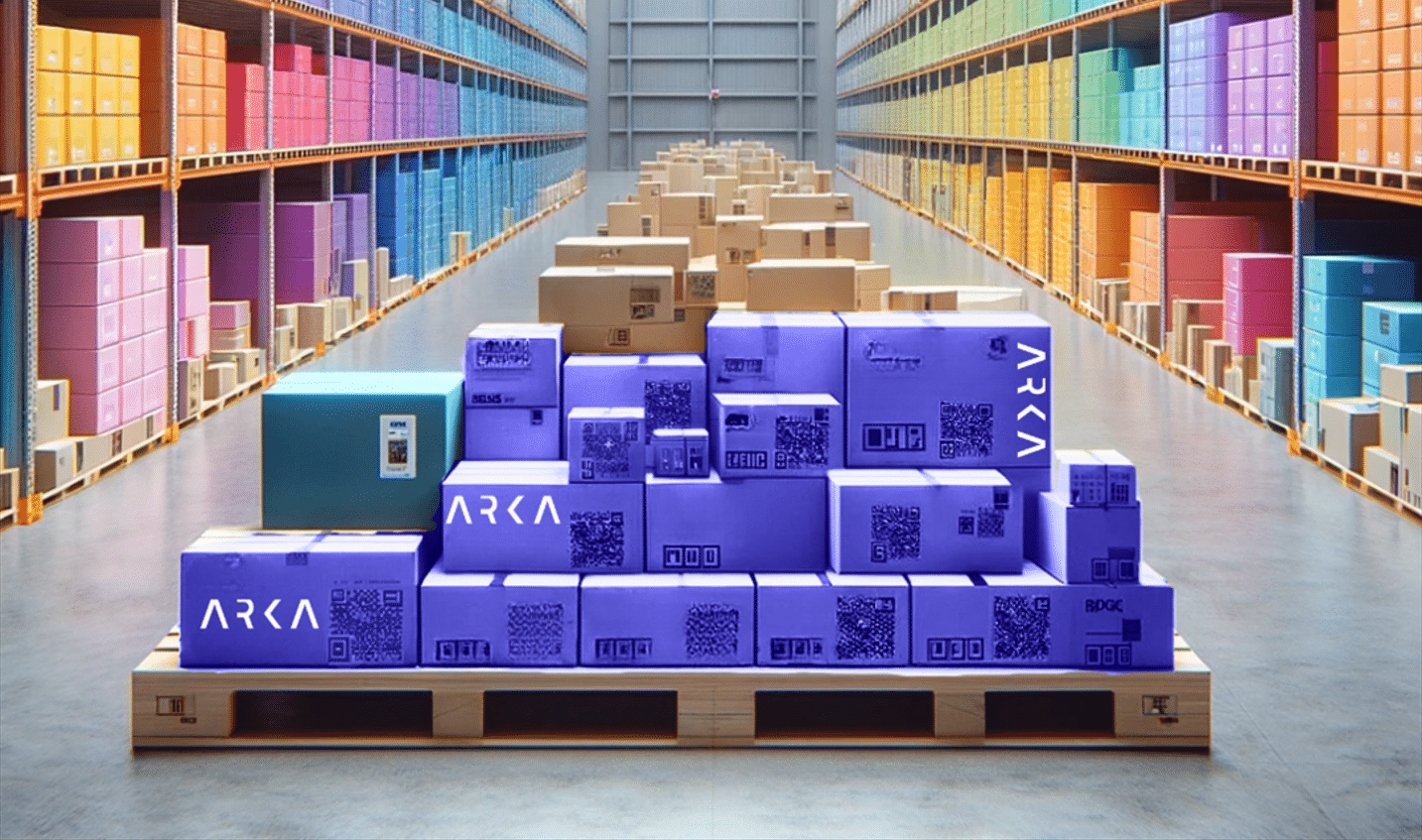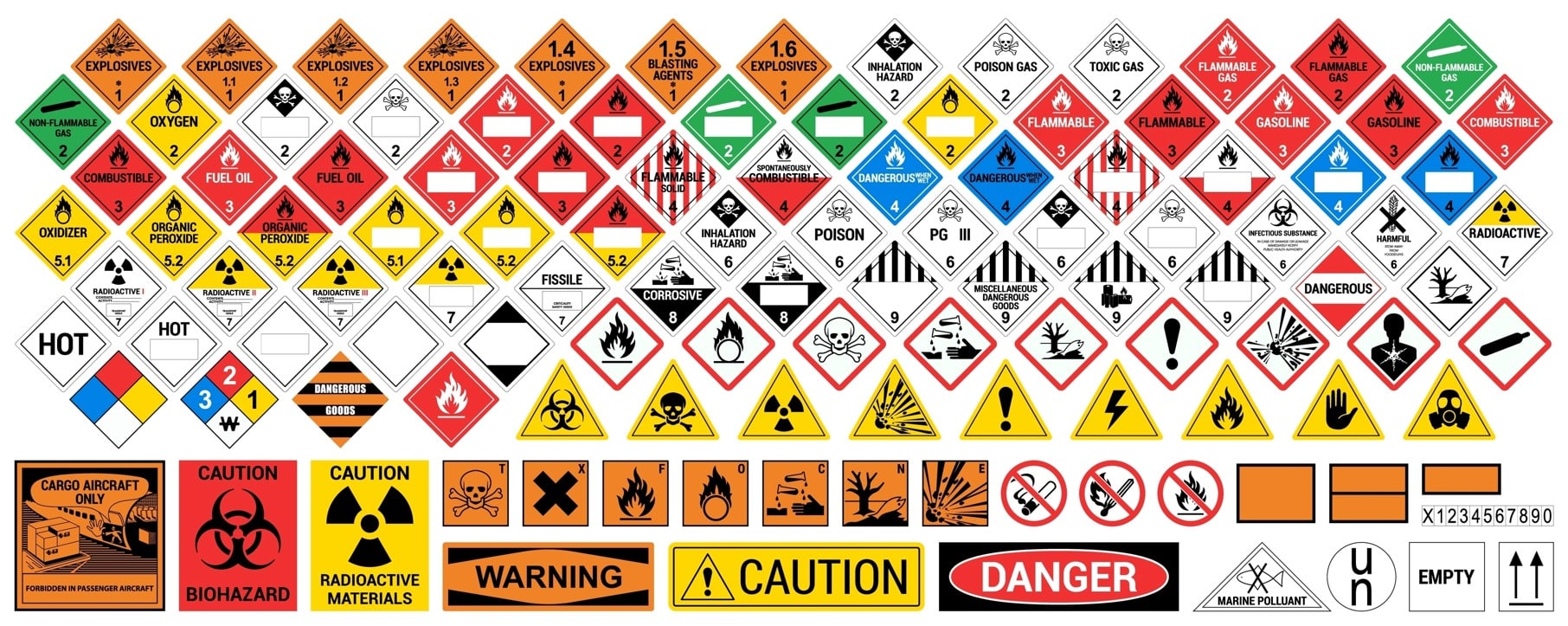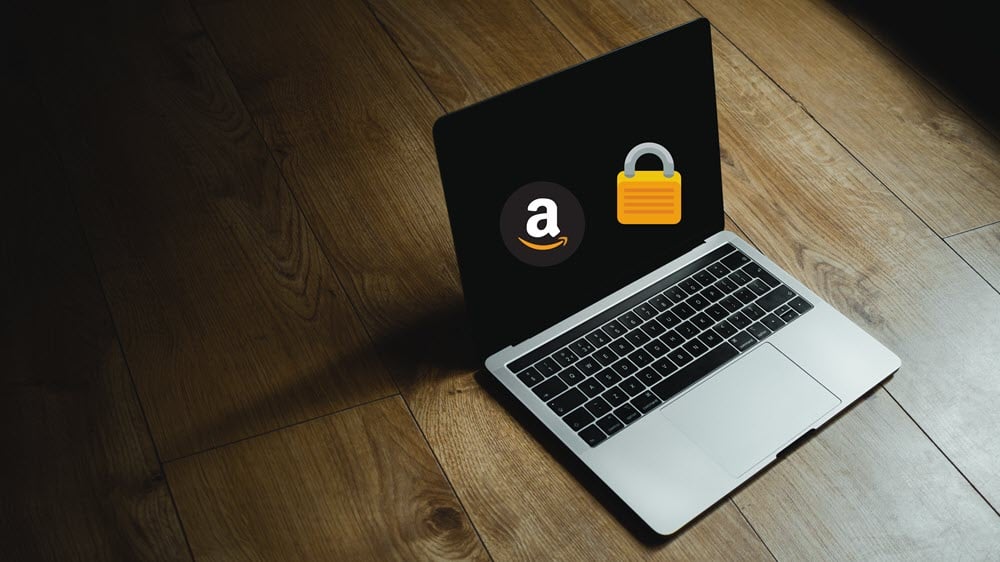Podcast: Ecommerce Wizards Podcast – What is Amazon’s Buy With Prime Button?
Guillaume Le Tual, host of the E-Commerce Wizards Podcast, interviews Manish Chowdhary, CEO of Cahoot, about Amazon Buy With Prime. The service allows merchants to install the Amazon Prime button on their product page, shopping cart, and checkout. Customers can then log in to their Amazon Prime account to check out and receive one or two-day free shipping, free returns, and no minimums. For customers, it’s a great service, but for ecommerce merchants, it’s a Trojan Horse. Amazon Prime circumvents the entire order checkout process from the merchant’s platform, and payment processing goes through Amazon, which also collects data about the customer and charges the seller for order fulfillment. While Amazon FBA can be a benefit for merchants who lack a strong shipping distribution system, there’s also a cost of 15% that some merchants say is too high to make a profit. Amazon Prime service is a big deal for merchants because it can replace their whole checkout experience and be a disadvantage for them.
Guillaume:
Hello, everyone. Guillaume Le Tual here, host of the E-Commerce Wizards Podcast, where I feature leaders in e-commerce and business.
Today, for a second time, our guest is Manish Chowdhary, who’s the CEO of Cahoot. And we’re going to have a chat together about what is Amazon Buy With Prime.
Speaker 3:
This episode is brought to you by MageMontreal. If a business wants a powerful e-commerce online store that will increase their sales, or to move piled up inventory to free up cash reserves, or to automate business processes to reduce human processing errors, our company, MageMontreal, can do that. We’ve been helping e-commerce stores for over a decade.
Here’s the catch. We’re specialized and only work on the Adobe Magento e-commerce platform, also known as Adobe Commerce. We’re among only a handful of certified companies in Canada. We do everything Magento-related.
If you know someone who needs design, support, training, maintenance, or a new e-commerce website, email our team at support@magemontreal.com, or go to magemontreal.com. That’s M-A-G-E montreal.com.
Guillaume:
So Manish, thanks for being here for a second recording.
Manish:
Thank you for having me, Guillaume. Thank you very much.
Guillaume:
All right, can you enlighten us? What is, first of all, Amazon Buy With Prime?
Manish:
Amazon Buy With Prime is the Amazon’s mission to dominate the world, as it always does. But let’s break it down.
What Amazon Buy With Prime is, it’s essentially an option for websites outside of Amazon to install the familiar Amazon Prime button on the product page, in their shopping cart and checkout. So the user, instead of checking out through your native platform’s shopping cart and checkout, you can check out by logging into your Amazon Prime account, as you would on your Amazon.com website.
And as a result of that, you will get all the benefits of Amazon Prime, which is one or two-day free shipping, free returns, and also there’s no minimum and so on. So you log in, and you check out using Amazon, and then Amazon will ship the item to you from its FBA, Fulfillment by Amazon Warehouse, and you’ll get it in one or two days.
So great service for the consumer, but of course, not so great for the sellers, which I can talk about further.
Guillaume:
Yes, exactly. From an entrepreneurship and business point of view, it’s like, oh, big red flags here showing up. So, okay, what do you see as a red flag for merchants here?
Manish:
Right. So for the merchants, for the sellers, I call Amazon Buy With Prime a Trojan Horse. It’s essentially, what Amazon did with its AWS, the web services or the hosting division, they started using the web hosting for themselves. And then they converted that into a mass service that we all, many of us use, Amazon’s Web Hosting Services.
So this is Amazon’s attempt to basically get into the 3PL, the order fulfillment world. They built the Amazon FBA for themselves, for products that are sold on Amazon, and now they’re opening this up to the larger internet. So if you are selling on your own website, how can Amazon participate and get a share of that wallet from your website, because they have 150 million subscribers? But essentially, what Buy With Prime is doing is essentially encapsulating three different Amazon services into one, which is Amazon Advertising, Amazon FBA, Fulfillment by Amazon, and Amazon Payment.
So essentially, when the user checks out using the Buy With Prime, it completely circumvents the entire checkout process from the platform, and it basically puts payment processing with Amazon. And then, of course, Amazon collects all the rich data about the customer. What are you buying? When are you buying? And also, Amazon gets to charge the sellers for order fulfillment.
And so, this is a very, very attractive service for the consumer. But of course, for the seller, it creates a lot of challenges. And I can continue to elaborate, but basically, it’s a Trojan Horse and there are lots of disadvantages for the sellers, and there are some advantages as well, to be fair.
Guillaume:
Yeah. I like your term, Trojan Horse, and it is a powerful move from Amazon. You can see, for example, Shopify CEO, that will slip up about this at first and say, “Yeah, yeah, we’ll do it.” And then they will backtrack on this, and say, “No way,” because it would replace Shop Pay, which is one of the competitive advantage of Shopify.
So, it is a big deal for a merchant to have your whole checkout experience totally replaced by Amazon. So yes, on the positive side, if you don’t have a strong distribution system already in place, having Amazon FBA, Fulfilled by Amazon, can be a strong benefit. But also, there’s a cost to this, and the cost is not always the best.
I know some merchants that say, “If I sell myself and I fulfill myself, I make money. If I use FBA, well, it’s not worth the trouble anymore. I don’t make much money anymore.” You know? So there’s that aspect, about the extra 15%, it can make a difference. For the merchant, cost will not be zero to fulfill themself, obviously. But that 15% sometimes is too much for merchant, that it doesn’t make it worth it for them to run the business if all the sales will come into that channel, with FBA.
Also, you give up a lot of your control. That order is going to go into Amazon. How much control do you retain personally as a merchant over this transaction? How much information do you have about the customer? How much customer service do you need to do? And so on. Perhaps you can elaborate a little bit on that aspect.
Manish:
Absolutely. All good points, Guillaume. But even beyond that, Buy With Prime infiltrates the entire customer journey from discovery, conversion, post purchase, which includes fulfillment as you said, and the repeat purchase. And I’ll give you some example for each one.
Discovery is essentially, Amazon, you would install a familiar Buy With Prime, the blue Amazon Prime, with the swoosh, the very familiar icon that we know. So now, that will get installed, say, right below your Add to Cart button, if you’re on a Magento site, for example. And so, just imagine the button itself on your site is a reminder for the customer to go check out Amazon, because you’re putting Amazon branding on your product details page and so on. So the Amazon, even if you acquired this traffic and brought it to your website, now the customer is being potentially invited to go, reminded of their Prime membership, so that they can possibly go on Amazon and compare prices and so on. So that could lead to siphoning of traffic. That’s one.
On the conversion side, most ecommerce brands, most websites, retailers, like to encourage larger shopping carts. We know that on your DTC website, most brands have free shipping on orders over, say, $49. So, it’s not free-free for buying a toothpick or buying a toothbrush, but that’s what you get with Amazon Prime.
Amazon Prime does not have those limits. So if you’re a Prime member, the people could actually, this could lead to lower cart size on your DTC site, as opposed to encouraging a larger cart. That’s the conversion part.
And then, let’s say you add the item to the shopping cart and you abandon the cart. We know that 85% of the Amazon Prime members visit Amazon.com at least once a week, and 45% of them make a purchase, a transaction, once a week. That’s a very high repeat loyalty that these Amazon Prime subscribers have to Amazon. And part of it is because they’ve paid $139, $140 annual membership, so they want to exploit that.
But imagine somebody added the item to the shopping cart and they didn’t check out. Now, it’ll be very difficult for the brand to re-market to this customer. And if they hop over to Amazon once a week, they might be targeted with the ads of another product that competes with this product. And you are the one who helped add that item to the cart in the first place.
So, those are some of the challenges on the order fulfillment side to continue with that school of thought. The product is going to come in an Amazon branded box. We’ve all seen the familiar Prime tape that goes on the brown box, with Amazon advertising. So, you bought the item from this DTC brand that’s looking to promote its ecommerce brand, its value proposition to the customer. But the customer is being reminded of Amazon every step of the way. And so, that is not very good.
And then finally, on the repeat purchase, the customers are more likely to go back to Amazon. And if you are selling on Amazon, you’ll have to not pay anywhere between that eight to 20% commission. So there are many aspects of it is not so enticing for the seller. And of course, there are some advantages which I can cover as well, Guillaume, to be fair.
Guillaume:
We’ll cover after. I think we’re not done with the downsides, quite frankly, which to me is way larger than the upside. Because if you want to use Amazon’s email, FBA or whatever, fulfillment services and so on, well, you can just list your product on the marketplace.
Also, Amazon’s fees, the normal fees plus the fees for fulfillment, they are fair when Amazon is bringing you the customer. And it’s the reason why you want to put your products on the marketplace in the first place, because Amazon is going to bring you traffic, going to bring new customers there.
But if you paid for the customers yourself separately, maybe with your own Google Ads, your own marketing efforts and so on, and then you’re still going to pay all those costs and send over the customer to Amazon, and then you sort of lose traction. And I really like your other point. What if the customer does not buy right away? It happens. You add stuff to cart, you don’t finish, get interrupted, kids calling you, whatever. You come back, and then you’re going to see ads and similar product, maybe cheaper on Amazon. It is really a Trojan Horse. From my point of view, it is a really big mistake from business point of view.
I am all for selling on marketplaces like Amazon. Do it. Go for it if it makes sense for your business. It’s a good idea. But your own website, your own .com or whatever, is a separate thing, is a way to diversify. So, you do not want to tie it even more to Amazon. And Amazon is just trying to take buys more and more into what it currently does not control.
It would prefer that all transaction worldwide goes on Amazon, and they don’t currently control all those independent websites. Now, that’s one way to sort of control them, to a great extent. So, I see more negative than positive. But let’s go with the positive. Let’s be fair. So, what’s the positive?
Manish:
Well, positive is, if you have a website, an ecommerce brand that’s not very well-known, and you don’t have a lot of customer trust, Amazon Prime button can install that trust. It’s sort of like many websites that I don’t want to check out and provide my credit card information to that website, because maybe I don’t have trust.
And that is how PayPal gained prominence in the first place. People love checking out through PayPal. And consumers, of course, we all want that free one-day, two-day delivery. So, if the brand does not have the ability, if the seller’s not utilizing services like Cahoot, it would be very difficult for them to offer that level of service.
So, this would be a great way for them to get traction, if they don’t want to take any hassle with fulfillment, operations and logistics, and even customer care. Because remember, as part of the Prime purchase, you’re also delegating a lot of your customer service to Amazon. So, whether it’s a good thing or a bad thing. But that’s certainly like, I’ll give you an example, and we actually did the study.
So the Skullcandy, you’re probably familiar, it’s a very popular headphones brand, very popular with gamers. And they’re selling a product that, let’s say they’re offering four to seven-day delivery, which is what we found when we checked their website, when we did the study about a few months ago, in the summer.
And then another company called Razer, which is an up and coming brand, and if they installed Buy With Prime, and both the products are priced equally, as a consumer you might be motivated to check out through Buy With Prime on Razer.
So in the absence of date certain shipping, let’s say I have a birthday party, I need to buy a gift and I need to have it arrive by Saturday. Today is Thursday. So, my options are very limited. So it can be quite advantageous in those cases for the people who don’t want to fully outsource fulfillment to FBA.
And just to add to that, by the way, the cost of fulfilling orders with Amazon through Buy With Prime is not the same as if the order arrived on Amazon.com. Because Amazon makes the 15, whatever, 15% commission on those, they will not make that commission on these orders. And therefore, these orders will be classified as multichannel order fulfillment.
And we know that if you try to get a Magento order Fulfilled By Amazon (FBA), you pay more. So it’s not the same low price that if the order originated on Amazon. And we’ve done some calculation, in many cases, it works out to be 51% more expensive to do multichannel fulfillment. And of course, if you want the map, there’s tons of webinars on our Cahoot.ai, on the Resources section. Check out or contact us, we’ll be happy to elaborate on that multichannel fulfillment.
Guillaume:
And just to clarify it, so you’re saying that 51%, just to be sure I understood it well. So 51% more expensive from multichannel fulfillment if you send the order then to Amazon, so if it came from your on e-commerce store, is that what you’re saying?
Manish:
That’s right. Because, let’s say, you’re selling socks. I have black socks and I have red socks. And Amazon FBA, routine FBA will cost you $4 and 22 cents. But if I send Amazon that order from Magento to fulfill, it’ll cost me $6 and 31 cents to ship the same identical item. The only difference is this is a Magento order versus an Amazon.com order.
Now further, let’s say a customer buys a pair of black socks and a pair of red socks. Amazon treats them as two unique items. They don’t put them all together. What’s the composite weight? The weight of the items, the two pairs of socks, is not going to be different. You’ll pay double because you’re paying 4.22 for one pair, you’ll pay $8 and 44 cents for two pairs of socks. And if it was a multichannel, if it was a Magento order, it’ll be $12 and 74 cents. That’s how we arrived at the 51% more expensive amount.
Guillaume:
Okay. So, it is not optimized in the merchant’s favor for cost saving and bundling boxes and so on, because actually Amazon will typically ship to you in all separate boxes as fast as it can. But somebody’s paying for all this, this, quote, unquote, free shipping. The merchant’s paying for it.
Manish:
Well, that is just the way Amazon’s pricing model. So the product may still arrive in the same box, but the way how FBA prices its services, it does not. It simply looks at a price, flat price per item. Per item. Now it does not take the weight into consideration.
So FBA, especially multichannel fulfillment through FBA, becomes quite pricey when you have larger number of units per order. So, if you’re a apparel ecommerce brand, if they try to do multichannel order fulfillment, let’s say you have a Magento store or a Shopify store, and you want to get those orders fulfilled through FBA, the cost will add up and it becomes quite expensive. Because apparel, and certain product categories, lend themselves for larger number of units, average number of units per order.
Guillaume:
Okay. All right. Okay, thanks for that clarification. Is there anything else that people should know about the Amazon Buy With Prime?
Manish:
I think you covered it. Shopify has banned it. Shopify, they’ve openly come out and say that this is against the Terms of Service, and you’ll get a big warning if you’re a Shopify merchant.
It’s still a By-invitation Only program. We know a little about it so far. So, I think merchants should… Essentially, this is a call to action for brands and retailers, that faster shipping, the two-day shipping, it used to be an Amazon thing. Now it’s going to be an internet thing. It is what’s expected from you.
So I would encourage brands and retailers to look at their order fulfillment strategy, their operation strategy. You don’t need to go build tens of warehouses. That’s very expensive. In fact, right now, the warehouse rents are at all-time high, Guillaume, all-time high. And the vacancy is an all-time low. So even if you wanted to go and look for warehouses in California, or the West Coast of the US, you can’t find them.
If you find them, you’re going to have to sign a multi-year lease. You’re going to have to make a very large capital investment. It’s like the days of, you know, we no longer see competitive advantage in owning servers in the age of cloud computing.
So order fulfillment is going through a similar transition, that services like Cahoot are democratizing that service. And in fact, if you have excess capacity in your warehouse, we encourage you to come apply at Cahoot.ai, to join as a fulfillment partner.
So this is my recommendation for brands and retailers, to not take delivery and shipping lightly. In fact, we have a saying internally in our circles, that half your shopping experience is now your shipping experience. So, you got to really think of it from a customer experience standpoint.
Guillaume:
Yes. Okay. And I think this is pretty good coverage for Amazon Buy With Prime. It can be seductive for some consumers to check out at equal price point and so on. I’m going to benefit from that checkout experience. But you can compete with it, no matter the size of the merchant. It’s more a question of, can you deliver quickly? Can you write the date of arrival on your own website?
And of course, inviting Amazon on your own .com is, generally speaking, a very bad idea as a business move. It should be a diversification, unless it’s sort of a mini site that you more or less don’t care about. That is just a marketing site that is there to drive traffic, a bit like some brands have a lot of mini sites, and blogs, and so on that just drive traffic to a store. Then, if that’s the role of your small e-commerce store, that would be perfectly fine.
But if it’s your real, branded e-commerce store that you care to build a brand and brand value, I would not invite Amazon, as much as possible, on that site. I think it’s a bad business move.
So, that’s it. Well, Manish, thank you for this discussion. If people want to get in touch with you, what’s the best way?
Manish:
Well, hop over to www.cahoot.ai. That’s singular. And fill out the Contact Us form. I would love to chat with you.
And you can also find me on LinkedIn. Just Google, well LinkedIn, my name. Search my name on LinkedIn, with Cahoot, and I will personally respond to you.
So I’d love to chat with merchants, brands, retailers. Because there’s much to learn from practitioners, as much as we know about logistics, and share stories and try to find a better way to do business, that puts more money in the pockets of the business owners.
Guillaume:
All right. Well, Manish, thank you for being here today.
Manish:
Thank you for having me.




